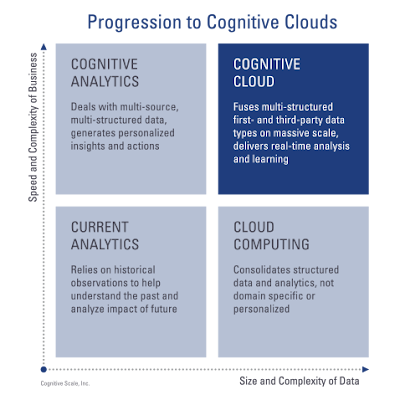Twitter Feed
Cloud Computing on CNBC – $100B market
Google’s Head In The Clouds Follow me at https://Twitter.com/Kevin_Jackson
IBM Blue Cloud
A short news interview on the IBM Blue Cloud . Follow me at https://Twitter.com/Kevin_Jackson
Amazon’s Cloud Overtakes Websites
May 27, 2008 See NY Times article, Cloud Computing: So You Don’t Have to Stand Still Follow me at https://Twitter.com/Kevin_Jackson
May 1 IBM, Google Partnership Announcement
In this video, IBM and Google announce their joint cloud computing initiative. As I said in my earlier post, Google and IBM have teamed up to provide a “Google-like” infrastructure.…
“The Missing Piece in Cloud Computing”
First Software as a Service – SaaS…Then Hardware as a Service – HaaS…Now, Middleware as a Service – MaaS? GigaSpaces’ CMO Geva Perry will be presenting on middleware virtualization at…
How the NRO can leverage Cloud Computing
Last Thursday, May 22nd, I had the pleasure of attending an Intelligence Community Executive Forum hosted by Carahsoft. The topic of this forum was “”Innovative Technology for the Intelligence Enterprise”.…
Green Cloud Computing
The other day I was asked “Why is cloud computing considered green?” Wouldn’t you know, The Economist provided the perfect answer. “In future the geography of the cloud is likely…
Oracle in the Cloud
Oracle (NSDQ: ORCL) is building new data centers to support cloud computing. The company is investing $285M and will break ground on the 200,000-square-foot facility this summer. Oracle’s president Safra…
Cloud Computing supports Net-Centric Warfare
Netcentric warfare theory contains the following four tenets in its hypotheses: 1) A robustly networked force improves information sharing;2) Information sharing enhances the quality of information and shared situational awareness;3)…
According to the IBM Institute for Business Value the market will see a rapid adoption of initial cognitive systems. The most likely candidates have moved beyond descriptive and diagnostic, predictive and routine industry-specific capabilities. 70 percent of survey respondents are currently using advanced programmatic analytics in three or more departments. In fact, the widespread adoption of cognitive systems and artificial intelligence (AI) across various industries is expected to drive worldwide revenues from nearly US$8.0 billion in 2016 to more than US$47 billion in 2020.
The analyst firm IDC predictsthat the banking, retail, healthcare and discrete manufacturing industries will generate more than 50% of all worldwide cognitive/ AI revenues in 2016. Banking and retail will each deliver nearly US$1.5 billion, while healthcare and discrete manufacturing will deliver the greatest revenue growth over the 2016-2020 forecast period, with CAGRs of 69.3% and 61.4%, respectively. Education and process manufacturing will also experience significant growth over the forecast period.
th’s ability to replicate intuitive experiences provides a number of opportunities within sentiment analysis. With its ability to understand scenes and context, it can decipher how people are feeling based off facial expressions or voice stress levels.
- Need robust and simplified data classification processes in order to more easily deliver industry and business model specific value;
- Require the implementation of information technology security controls that are driven by data value and role based access control paradigms; and
- Leverage software applications that should be developed using ISO 27034 which is a multi-part standard on specifying, designing/selecting and implementing information security controls through a set of processes integrated throughout an organization’s Systems Development Life Cycle/s (SDLC).
( Thank you. If you enjoyed this article, get free updates by email or RSS – © Copyright Kevin L. Jackson 2016)
Cloud Computing
- CPUcoin Expands CPU/GPU Power Sharing with Cudo Ventures Enterprise Network Partnership
- CPUcoin Expands CPU/GPU Power Sharing with Cudo Ventures Enterprise Network Partnership
- Route1 Announces Q2 2019 Financial Results
- CPUcoin Expands CPU/GPU Power Sharing with Cudo Ventures Enterprise Network Partnership
- ChannelAdvisor to Present at the D.A. Davidson 18th Annual Technology Conference
Cybersecurity
- Route1 Announces Q2 2019 Financial Results
- FIRST US BANCSHARES, INC. DECLARES CASH DIVIDEND
- Business Continuity Management Planning Solution Market is Expected to Grow ~ US$ 1.6 Bn by the end of 2029 - PMR
- Atos delivers Quantum-Learning-as-a-Service to Xofia to enable artificial intelligence solutions
- New Ares IoT Botnet discovered on Android OS based Set-Top Boxes



